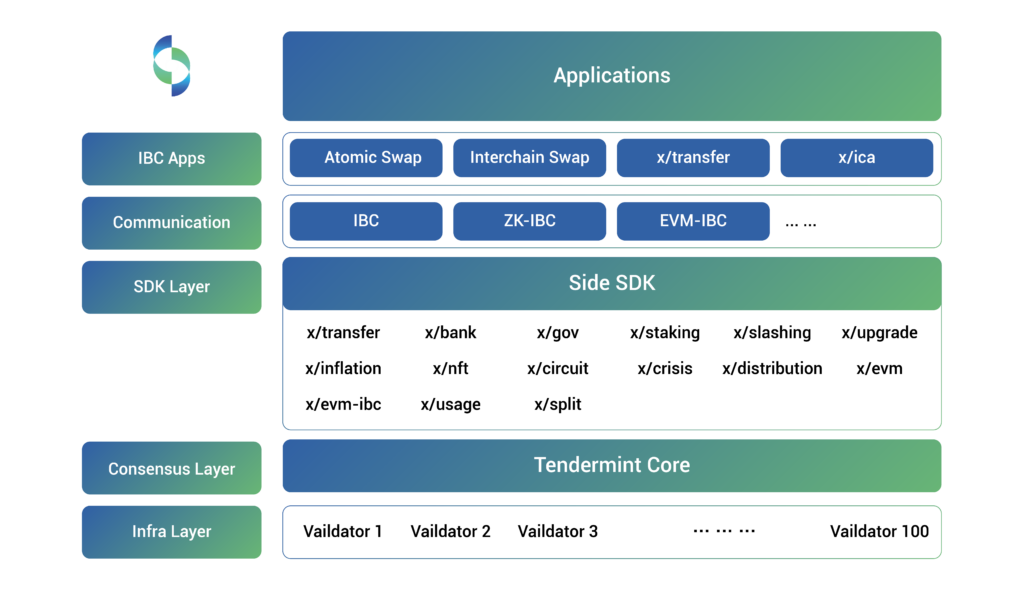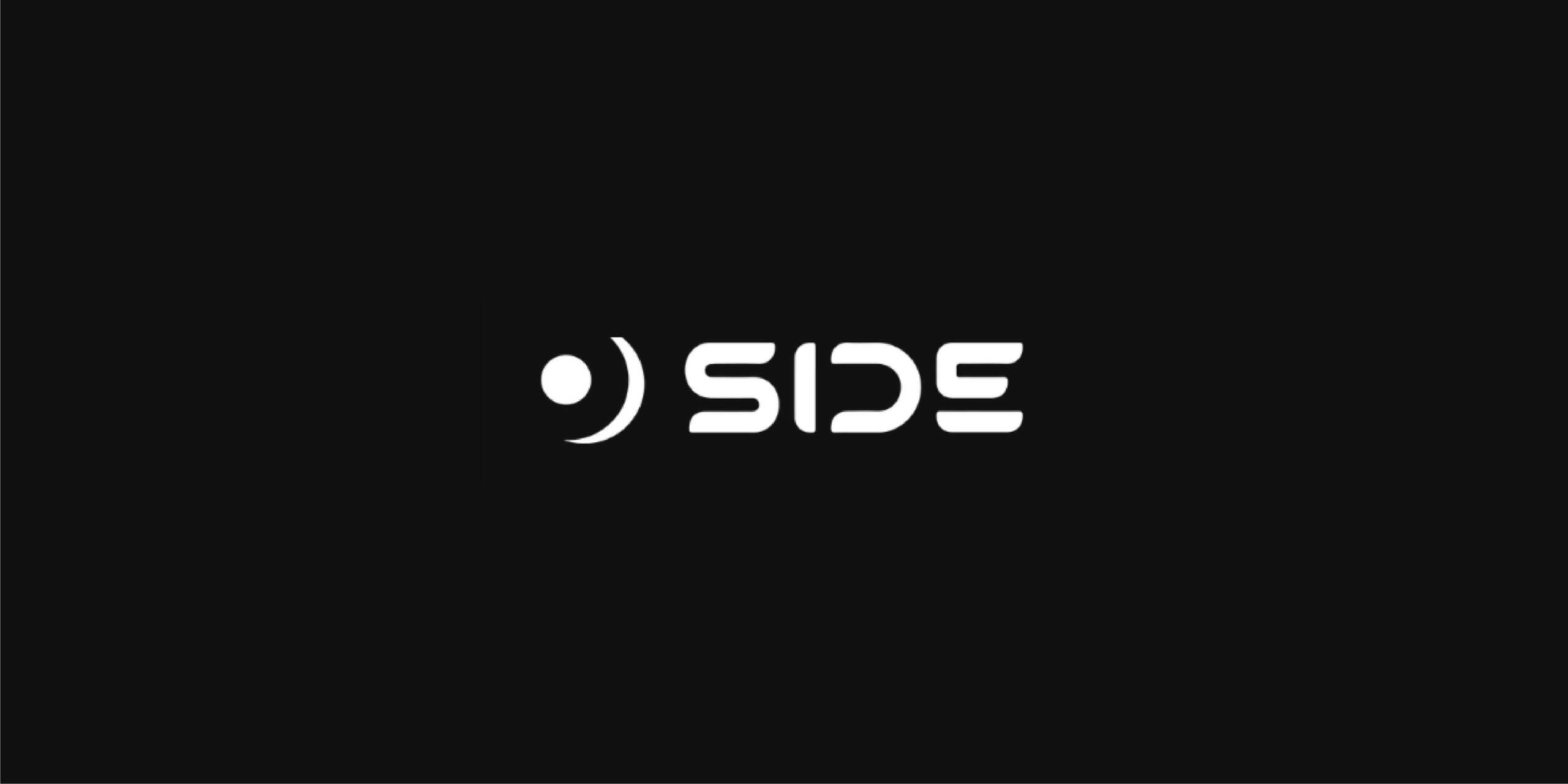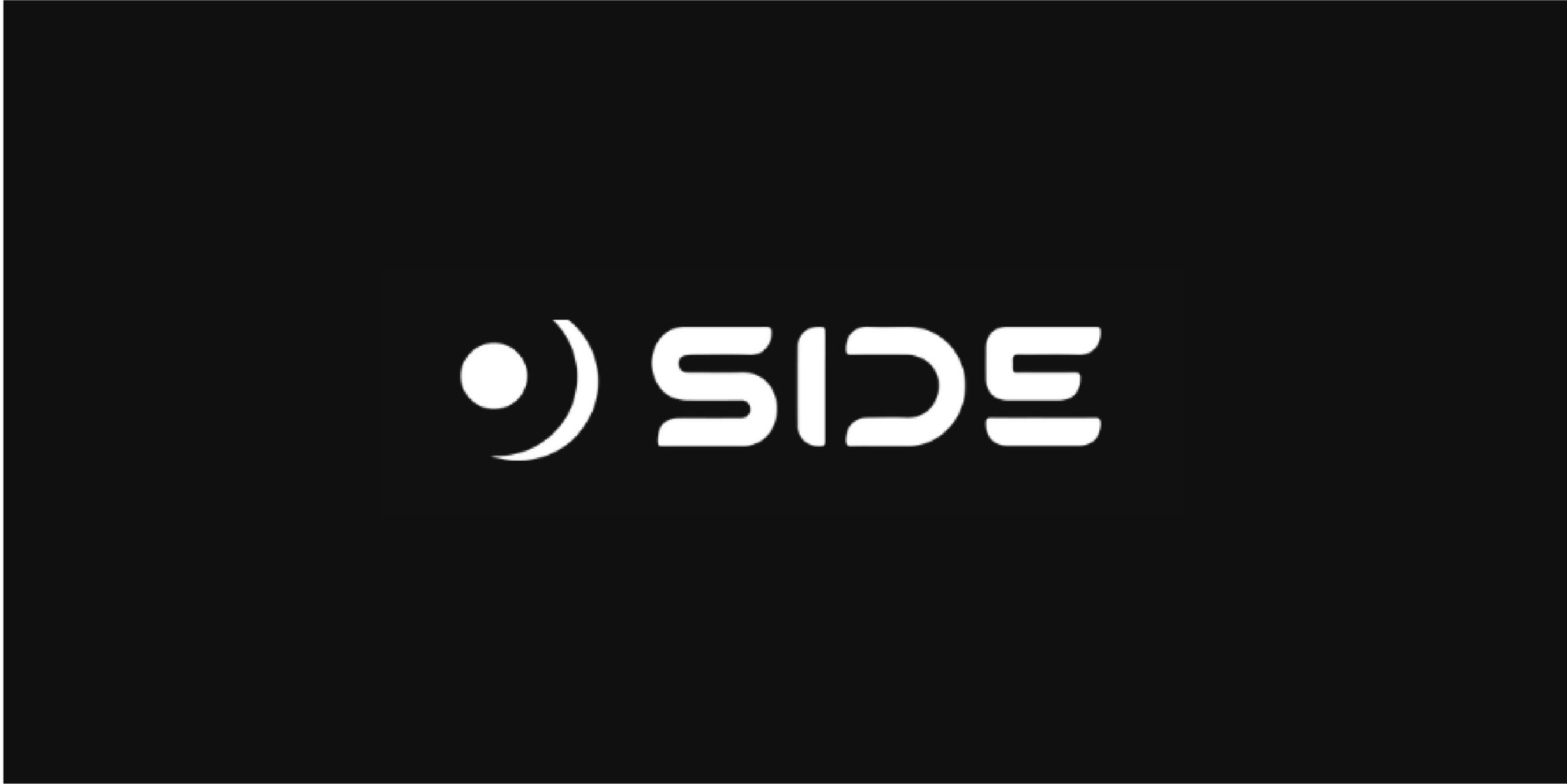Introduction
This objective review provides an overview and evaluation of Side Protocol, a novel interoperable finance protocol built for Web3 applications in the Cosmos ecosystem. The review assesses various aspects, including innovation, architecture, code quality, product roadmap, usability, and the team behind Side Protocol.
Innovation
Side Protocol demonstrates a high level of innovation in interoperable finance. The project aims to build flagship inter-chain infrastructure and products for Cosmos, rollups, modular chains, general layer1s, and beyond. By leveraging the Inter-Blockchain Communication (IBC) Protocol, Side Protocol introduces open standards and implementations that enable seamless cross-chain asset swaps and DeFi applications.
Architecture
The architecture of Side Protocol is robust and well-designed. At its core is Side Hub, a premier blockchain platform explicitly designed for inter-chain finance. Built using the Cosmos SDK, Side Hub is an aggregation hub, routing liquidity across multiple networks as an intermediary chain. It incorporates the self-innovated bridgeless inter-chain swap modules upon the IBC Protocol. Side Hub also supports cross-chain composability between EVM and Cosmos chains via IBC, allowing for secure and scalable blockchain operations.

Code Quality
The code quality of Side Protocol is commendable. The project utilizes well-established programming languages such as C, C++, Rust, Erlang, and Ruby. The codebase is open source and boasts good documentation, proper testing, and outstanding code commenting. With a significant number of lines and commits on GitHub, the project demonstrates a commitment to maintaining high code quality and excellent test coverage.
Product Roadmap
The product roadmap of Side Protocol includes the development of two IBC applications: Interchain Swap and Atomic Swap. Interchain Swap, implemented using Cosmos SDK and ICS-101 protocol, enables bridging cross-chain asset swaps from a liquidity pool between different networks. Atomic Swap focuses on scalable cross-chain P2P swaps and order books, providing a decentralized and secure way to exchange digital assets across multiple blockchain networks. The roadmap outlines various use cases, including inter-chain DEX types, liquid staking, and payment channels.
Usability
Side Protocol strives to provide a seamless application user experience. The protocol facilitates bridgeless cross-chain AMM swaps between different networks through Interchain Swap. Sidex, a DEX application built on Side Hub, empowers users to execute cross-chain trades, taking advantage of the best available market opportunities. The project ensures ease of use for end customers, making it accessible to a wide range of users.
Team
The team behind Side Protocol exhibits a strong blockchain background and extensive experience in the field. They are motivated and dedicated to developing innovative products and ensuring a seamless user experience. With a solid team of developers, Side Protocol is well-positioned to achieve its goals and deliver on its promises.
Conclusion
Side Protocol is a highly innovative and promising project in interoperable finance. With its robust architecture, high code quality, and dedicated team, Side Protocol aims to revolutionize cross-chain asset swaps and enable new DeFi applications. The project’s focus on usability and commitment to providing a seamless user experience further adds to its potential for success. Overall, Side Protocol demonstrates a strong foundation and holds significant promise in the rapidly evolving crypto and blockchain industry.
| Initial Screening | |||
| Keep researching | |||
| Does this project need to use blockchain technology? | Yes | ||
| Can this project be realized? | Yes | ||
| Is there a viable use case for this project? | Yes | ||
| Is the project protected from commonly known attacks? | Yes | ||
| Are there no careless errors in the whitepaper? | Yes | ||
| Project Technology Score | |||
| Description | Scorecard | ||
| Innovation (Out Of 11) | 9 | ||
| How have similar projects performed? | Good | 2 | |
| Are there too many innovations? | Regular | 2 | |
| Percentage of crypto users that will use the project? | 6% – 10% | 3 | |
| Is the project unique? | Yes | 2 | |
| Architecture (Out of 12) | 11 | ||
| Overall feeling after reading whitepaper? | Good | 2 | |
| Resistance to possible attacks? | Good | 2 | |
| Complexity of the architecture? | Not too Complex | 2 | |
| Time taken to understand the architecture? | 20-50 min | 1 | |
| Overall feeling about the architecture after deeper research? | Good | 4 | |
| Has the project been hacked? | No | 0 | |
| Code Quality (out of 15) | 15 | ||
| Is the project open source? | Yes | 2 | |
| Does the project use good code like C,C++, Rust, Erlang, Ruby, etc? | Yes | 2 | |
| Could the project use better programming languages? | No | 0 | |
| Github number of lines? | More than 10K | 1 | |
| Github commits per month? | More than 10 | 2 | |
| What is the quality of the code? | Good | 2 | |
| How well is the code commented? | Outstanding | 2 | |
| Overall quality of the test coverage? | Outstanding | 2 | |
| Overall quality of the maintainability index? | Outstanding | 2 | |
| When Mainnet (out of 5) | 5 | ||
| When does the mainnet come out? | 6 months after TGE | 5 | |
| Usability for Infrastructure Projects (out of 5) | 5 | ||
| Is it easy to use for the end customer? | Yes | 5 | |
| Team (out of 7) | 6 | ||
| Number of active developers? | 3+ | 1 | |
| Developers average Git Background? | Senior | 2 | |
| Developers coding style? | Outstanding | 3 | |
| Total Score (out of 55) | 51 | ||
| Percentage Score | |||
| Innovation | 16.36% | ||
| Architecture | 20.00% | ||
| Code Quality | 27.27% | ||
| Mainnet | 9.09% | ||
| Usability | 9.09% | ||
| Team | 10.91% | ||
| Total | 92.73% |





